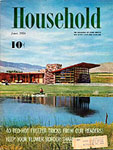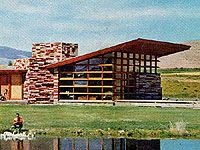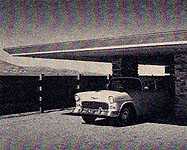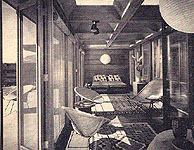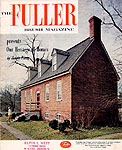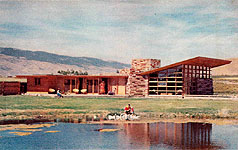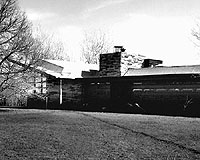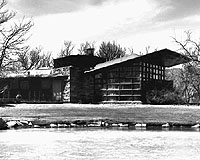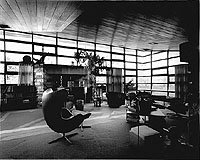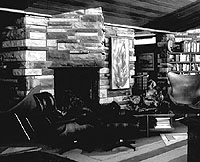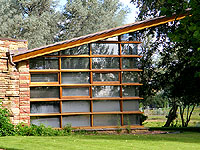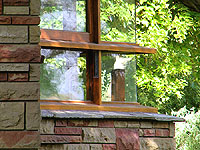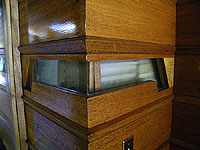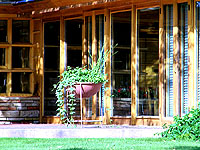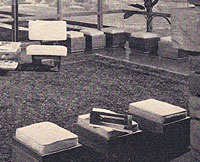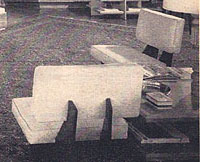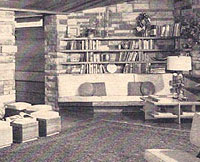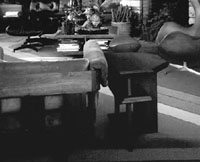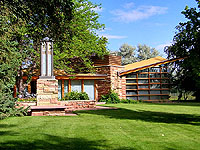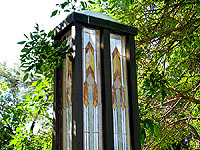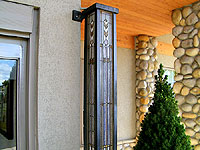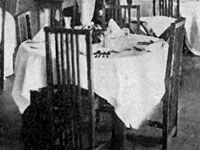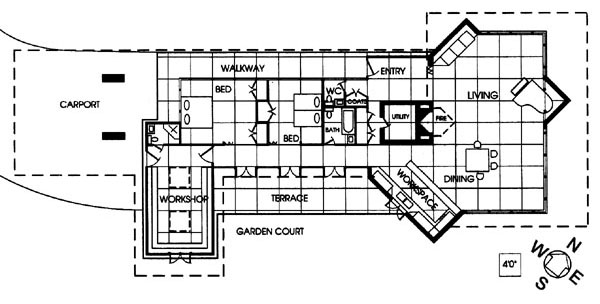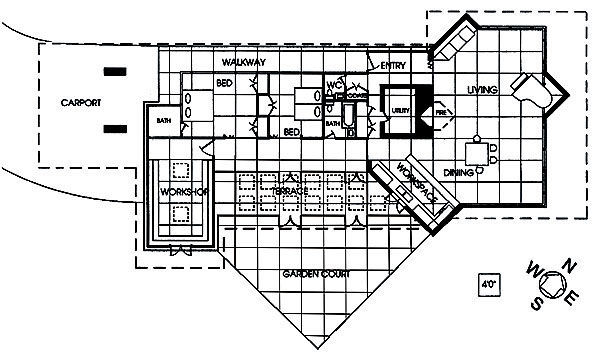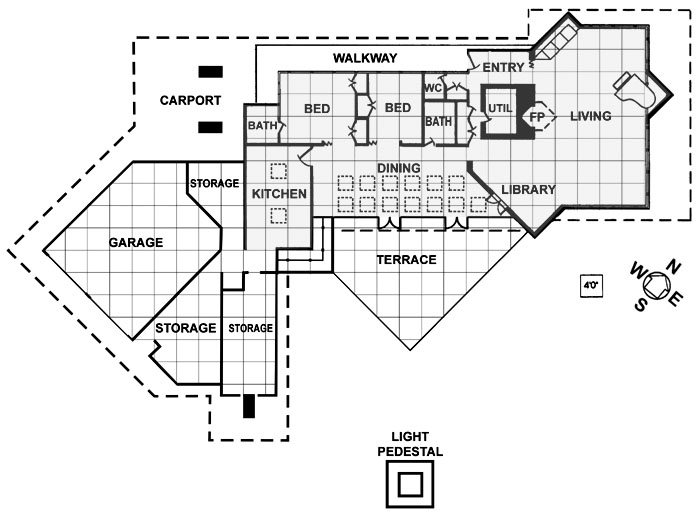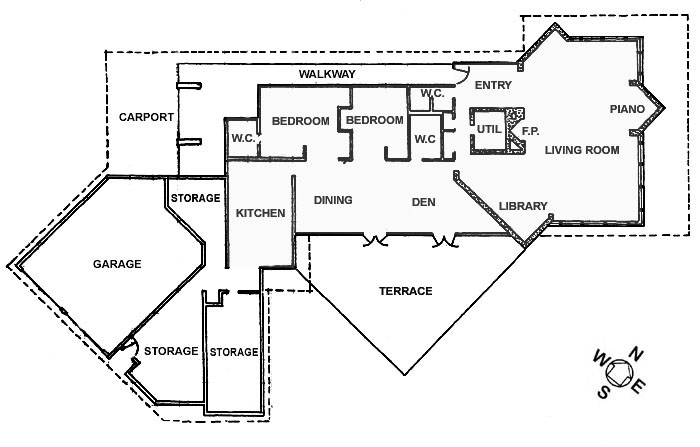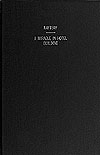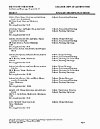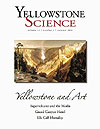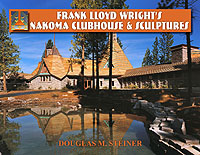- Wright Studies
Quintin and Ruth Blair Residence, Cody, Wyoming (1952) (S.351)
Over the past year and a half I have had the opportunity to accompany my daughter on a number of her business related road trips. She has been very gracious to indulge me on these occasions, and we visited a number of Wright properties. I happened to mention how much fun it might be to take a road trip to Yellowstone and Mt. Rushmore during the summer, and of course we could visit the Blair Residence on the way. Much to my surprise, she picked up on the idea and we made plans for August. With my wife, daughter and her two kids, along with two car top carriers we headed out. Our first evening camping in Yellowstone was freezing, and I do not exaggerate. It warmed up nicely during the day and was beautiful. On our second evening camping in Yellowstone, hail started about six pm. Large hail. In August. It covered the ground with about a half inch of hail. Then the monsoons started. Someone mentioned how nice a motel in Cody (our next stop) might be. It would only take two hours, and the kids would love to swim, and we would be warm. And they could swim the next morning while I visited the Blair residence. We were on the road in ten minutes at the most. The Blair’s Holiday Inn was full, but we did find a very nice motel for the evening.
As I drove up the driveway to the home the next morning, two deer were grazing in the front yard. Quintin Blair, now in his late 90's was unable to come to the door, but his assistant was gracious enough to allow me to view the outside of the home. Designed in 1952, it was completed in 1954, and today is his only work in the state of Wyoming. Ruth Taggart was a student at the Chicago Academy of Fine Arts during the 1930s. One of her professors, Bruce Goff, took the class to visit Taliesin at Spring Green, Wisconsin. In 1951 Ruth and Quintin Blair were visiting Arizona. She suggested that they visit Taliesin West in Arizona, where Wright now lived and worked. Wright met them in the driveway, lead them on a tour and invited them to stay for lunch. At the luncheon, Wright offered to design a home for them. In 1951 they purchased a 40 acre parcel of land in the Big Horn Basin (NRHP) a few miles east of Cody. Viewing the property today, with all its lush vegetation, it is hard to image how barren and desolate it looked at the time. Besides the wide open space, one of its redeeming features was a stream that meandered through their property which they dammed to create a pond. They began planting a wide variety of trees, and today the home is barely visible from the road.
The 1,500 square foot house is laid out on a four foot grid designed. W. Kelly Oliver, drew the original plans. He also was the original supervising apprentice for the Dallas Theater Center (S.395)and responsible for the completion after Wright past away. The house is dominated by a low flat roof that raises dramatically over the living room which reaches fifteen feet high on the on theNortheast side, and then cantilevers out eight feet, much like the Alpaugh (S.293), Shavin (S.339) and Seth Peterson (S.430). Designed in a rectangular shape, the workspace forms the lower leg of a short "L". The Living Room, piano alcove and Workspace masonry is set at a 45 degree angle to the rest of the home. The Northeast corner that projects from the glass wall was designed as a piano niche. Wright specified warm Philippine mahogany and locally-quarried red and gold ashlar sandstone.
There are many classic Wright details in the two bedroom home. Three sides of the Living and Dining Room are walls of glass, one and a half of which are floor to ceiling. There are windows with mitered corners. The Living Room roof cantilevers out eight feet. The original carport had a roof that cantilevers out 12 feet. There are built in shelves, seating and lighting. The centrally located fireplace has a mantle that extends out at a 45 degree angle. There are horizontal rows of floor to ceiling vertical door and windows, double doors that open outward, clerestory windows, cut-wood light screens. And a hidden entrance.
The Blairs collected prairie styled art glass light fixtures and dining room chairs from the demolished Yellowstone Canyon Hotel. One of the double stained glass light fixtures is mounted on a stone pedestal in the front yard and the second is on a pedestal in the Garden Court. A smaller set of single stained glass wall mounted light fixtures are mounted on either side of the entrance to the Blair’s Holiday Inn in Cody Wyoming. The Wright designed dining room chairs were replaced with prairie styled chairs they acquired from the Yellowstone Canyon Hotel.
Changes and additions have taken place over the years. They hired Bruce Goff, the architect that introduced Ruth to Wright, to enclose the terrace and create a dining room, enlarge the kitchen, and add a two car garage. According to Randolph C. Henning, the Blair residence (to the best of his recollection), is the only time the architectural genius of both Wright & Bruce Goff physically came together in an architectural work. He also mentioned that Michael Kreps was the Bruce Goff apprentice who was responsible for the drawings for the 1981 additions. After Bruce passed away, Charles Montooth was hired to design a master bedroom.
While Ruth was probably the impetus for selecting Wright, Quintin was just as involved in the process. Like many of Wright’s clients, he supervised the construction himself. The Blair Residence was placed on the National Register of Historic Places in 1991. .
"Our living room is beautiful... you feel like a party in that big room... you always feel like you want to dress up. There's a magic about it." Ruth Blair. (Homearama)
Text by Douglas M. Steiner, Copyright August 2009.
Quintin & Ruth Blair Household Magazine June 1956 NRHP 1989 Exterior Photographs 2009 Blairs & Yellowstone Canyon Hotel Original Floor Plan 1954 Revised Floor Plan 1956 Goff Floor Plan 1981 Floor Plan 1991 Additional Information Books Articles
Quintin and Ruth Blair Ruth Taggart was a student at the Chicago Academy of Fine Arts during the 1930s. One of her professors, Bruce Goff, took the class to visit Taliesin at Spring Green, Wisconsin. In 1951 Ruth and Quintin Blair were visiting Arizona. She suggested that they visit Taliesin West in Arizona, where Wright now lived and worked. Wright met them in the driveway, lead them on a tour and invited them to stay for lunch. At the luncheon, Wright offered to design a home for them. In 1951 they purchased a 40 acre parcel of land in the Big Horn Basin (NRHP) a few miles east of Cody. Viewing the property today, with all its lush vegetation, it is hard to image how barren and desolate it looked at the time. Besides the wide open space, one of its redeeming features was a stream that meandered through their property which they dammed to create a pond. They began planting a wide variety of trees, and today the
home is barely visible from the road.
The Blairs collected prairie styled art glass light fixtures and dining room chairs from the demolished Yellowstone Canyon Hotel. One of the double stained glass light fixtures is mounted on a stone pedestal in the front yard and the second is on a pedestal in the Garden Court.
Changes and additions have taken place over the years. They hired Bruce Goff, the architect that introduced Ruth to Wright, to enclose the terrace and create a dining room, enlarge the kitchen, and add a two car garage.
While Ruth was probably the impetus for selecting Wright, Quintin was just as involved in the process. Like many of Wright’s clients, he supervised the construction himself. The Blair Residence was placed on the National Register of Historic Places in 1991. Additional information...
Photographed on August 23,1974. Courtesy Buffalo Bill Historical Center. Photographer Jack Richard.
Household Magazine - June 1956
The Fuller Brush Magazine - 1962
Quinton Blair Residence 1989 (National Registry of Historic Places) The Blair Residence was placed on the National Register of Historic Places in 1991. On March 14, 1989 Richard Collier recorded these images for the National Registry of Historic Places. The Garage and Storage rooms have been added, but the Master Bedroom has not.
March 14, 1989, Photographed by Richard Collier, National Registry of Historic Places.
Exterior Photographs By Douglas M. Steiner, August 2009
There are many classic Wright details in the two bedroom home. Three sides of the Living and Dining Room are walls of glass, one and a half of which are floor to ceiling. There are windows with mitered corners. The Living Room roof cantilevers out eight feet. The original carport had a roof that cantilevers out 12 feet. There are built in shelves, seating and lighting. The centrally located fireplace has a mantle that extends out at a 45 degree angle. There are horizontal rows of floor to ceiling vertical door and windows, double doors that open outward, clerestory windows, cut-wood light screens. And a hidden entrance. Changes and additions have been fluid over the years. In 1981 they hired Bruce Goff, the architect that introduced Ruth to Wright, to design a Master Bedroom, add a two car Garage, enlarge the kitchen, create a formal dining room, and create a Library in place of the old Workspace. According to Randolph C. Henning, the Blair residence (to the best of his recollection), is the only time the architectural genius of both Wright & Bruce Goff physically came together in an architectural work. He also mentioned that Michael Kreps was the Bruce Goff apprentice who was responsible for the drawings for the 1981 additions.
Text and Photographs by Douglas M. Steiner, Copyright 2009 Wright Designed Furniture
Quintin & Ruth Blair and the Yellowstone Canyon Hotel
The Blairs collected prairie styled art glass light fixtures and dining room chairs from the demolished Yellowstone Canyon Hotel. One of the double stained glass light fixtures is mounted on a stone pedestal in the front yard and the second is on a pedestal in the Garden Court. A smaller set of single stained glass wall mounted light fixtures are mounted on either side of the entrance to the Blair’s Holiday Inn in Cody Wyoming. The Wright designed dining room chairs were replaced with prairie styled chairs they acquired from the Yellowstone Canyon Hotel.
Original Floor Plan 1954 Floor plan copyright 1993, “The Frank Lloyd Wright Companion” Storrer, William Allin, page 372-373. Revised Floor Plan 1956
After further research and additional documentation as well as published photographs in the June 1956 issue of Household Magazine, the Storrer Floor Plan was modified by Douglas M. Steiner, copyright 2009.
Floor Plan After Bruce Goff Addition 1981
Changes and additions have been fluid over the years. In 1981 they hired Bruce Goff, the architect that introduced Ruth to Wright, to design a Master Bedroom, add a two car Garage, enlarge the kitchen, create a formal dining room, and create a Library in place of the old Workspace. According to Randolph C. Henning, the Blair residence (to the best of his recollection), is the only time the architectural genius of both Wright & Bruce Goff physically came together in an architectural work. He also mentioned that Grant Gustafson and Michael Kreps were the Bruce Goff apprentices who were responsible for the drawings... Additional information...
Floor plan after the Bruce Goff Addition. Drawn by Douglas M. Steiner. Gray tone indicated original structure. Copyright 2009.
Floor Plan 1991
Floor plan copyright 1991, National Registry of Historic Places. Modified by Douglas M. Steiner. Gray tone indicated original structure.
Additional Biographical Information and Reading
A Miracle in Hotel Building, Being the Story of the Building of the New Canyon Hotel In Yellowstone Park
Circa 1911
Raftery, John Hentry; Photographs by F. J. Haynes
Relates to the Quinton Blair Residence.Bruce Goff Collection, Architectural Drawings: Projects A-C
2001
The Art Institute of Chicago, Chicago, Illinois
In 1990, The Art Institute of Chicago received Goff's comprehensive archive. Includes revisions to the Blair Residence.Yellowstone Science
Summer 2005
Hert, Tamsen Emerson
Inside Front Cover, Pp 21-36
"Luxury in the Wilderness. Yellowstone’s Grand Canyon Hotel, 1911-1960." History of the Hotel. Includes 35 photographs. Relates to the Quinton Blair Residence.
"Frank Lloyd Wright Monograph 1951-1959", Text: Pfeiffer, Bruce Brooks;
Edited and Photographed: Futagawa, Yukio, 1990, page 31-33."Quintin Blair House, National Register of Historic Places", Massey; Johnson, 1991. “The Frank Lloyd Wright Companion”, Storrer, William Allin, 1993, page 372-373. "Frank Lloyd Wright - A Visual Encyclopedia" Thomson, 1999, page 49. "Frank Lloyd Wright: The Western Work", Legler, Dixie, 1999, page 58-63. "The Vision of Frank Lloyd Wright", Heinz, 2000, page 246-247. "Essential Frank Lloyd Wright", Knight, 2001, page 208-209. "Bruce Goff Collection, Architectural Drawings: Projects A-C", Art Institute of Chicago, 2001. "Frank Lloyd Wright American Master", Weintraub; Smith, 2009, pages 290-291. "Frank Lloyd Wright, Complete Works 1943-1959", Pfeiffer; Gossel, 2009, pages 294-295.
- Related Images and Articles
- (Note, due to the fact that the internet is constantly changing, and items that
are posted change, I have copied the text, but give all the credits available.)A) Household Magazine, June 1956, Text: Albert Roland. Photography: Warren Reynolds Photography, Inc., Cover and pages 25-27, 65, 70. B) "On Living Wright" (Quote from Ruth Blair), Homearama, 2002, Pp 123. C) Yellowstone Science, Summer 2005, Hert, Inside Front Cover, Pp 21-36.
- Additional Wright Studies
- Adelman (S.344) Banff National Park Pavilion (S.170) Bitter Root Inn (S.145) Blair Residence (S.351) Blumberg Residence (Project)
Boomer Residence (1953 - S.361) Brandes Residence (S.350) Browne's Bookstore (S.141) Como Orchard Summer Colony (S.144)
Cooke Residence (1953) Copper Weed Urn & Weed Holder Disappearing City (1932) Elam Residence (S.336) "Eve of St. Agnes" (1896)
Feiman Residence (S.371) Frank L. Smith Bank (S.111) Gordon Residence (S.419) Griggs Residence (S.290) Hartford Resort (Project 1948)
Heller Residence (S.038) Henderson Residence (S.057) Hoffman Showroom (S.380) Horner Residence (S.142) "House Beautiful" 1896-98
Husser Residence (S.046) Imperial Hotel (S.194) Silverware and Monogram Japanese Print Stand (1908) Kalil Residence (S.387)
Lake Geneva Hotel (S.171) Lamp Cottage, Rocky Roost (S.021) Lockridge Medical Clinic (S.425) Lykes Residence (S.433)
Marden Residence (S.357) March Balloons Midway Gardens (S.180) Midway Gardens Dish (S.180) Nakoma Clubhouse
Nakoma Furniture Opus 497 Pebbles & Balch Remodel (S.131) Pilgrim Congregational Church (S.431) Loren B. Pope (S.268)
Roloson Rowhouse (S.026) Shavin Residence (S.339) Sixty Years Exhibition 1951-56 J. L. Smith Residence (1955) Steffens Residence (S.153)- Stohr Arcade (S.162) Stromquiest Residence (S.429) Sutton Residence (S.106) Teater Studio (S.352) Thurber Art Galleries (S.154)
- Tracy Residence (S.389) Trier Residence (S.398) Usonian Automatic Homes Williams (Way & Williams) (S.033)
Wyoming Valley School (S.401) Zimmerman Residence, (S.333)- Frank Lloyd Wright's First Published Article (1898)
- Photographic Chronology of Frank Lloyd Wright Portraits
"Frank Lloyd Wright's Nakoma Clubhouse & Sculptures." A comprehensive study of Wright’s Nakoma Clubhouse and the Nakoma and Nakomis Sculptures. Now Available. Limited Edition. More information.
HOME ARTIFACTS AUDIO BOOKS PERIODICALS PHOTOS POSTCARDS POSTERS STAMPS STUDIES ASSISTING ABOUT SEARCH
SEARCH WEB SITE To donate or pass on information, comments or questions: info@wrightlibrary.com ©Copyright 2001, 2014
